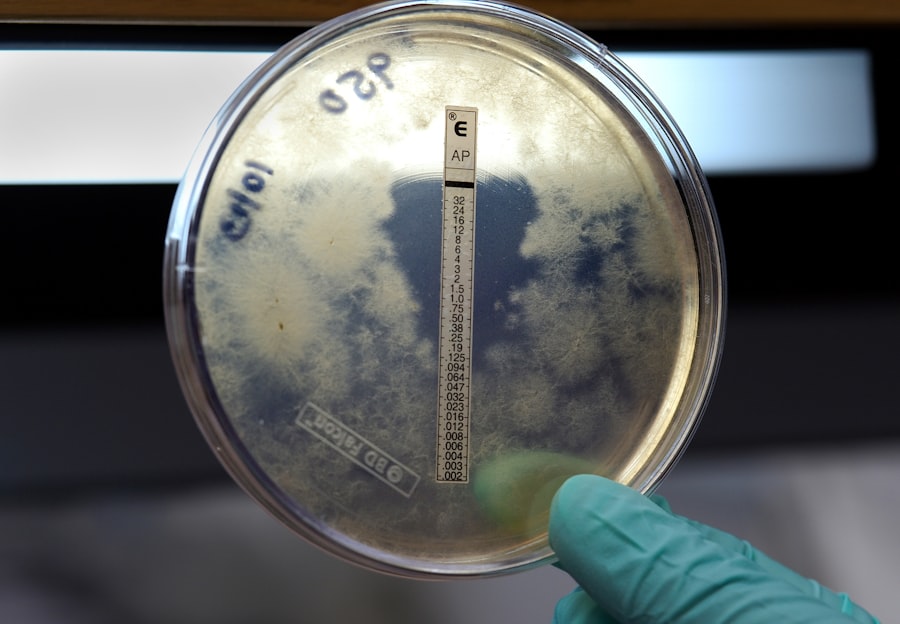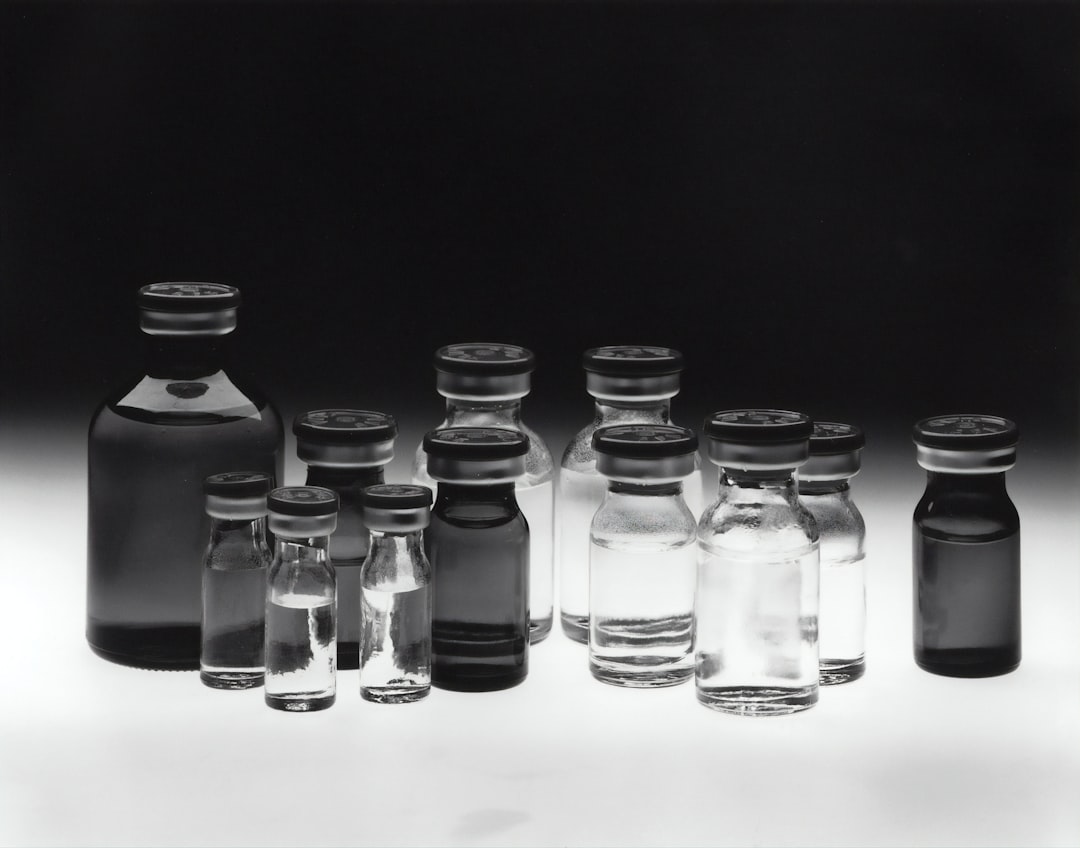As World War II raged on, the need for effective medical treatments became increasingly critical. The battlefield was not only a site of combat but also a breeding ground for infections and diseases that could devastate troops. Soldiers returning from the front lines often faced life-threatening infections, which could turn minor wounds into fatal conditions.
The urgency for a reliable antibiotic was palpable, as military leaders recognized that the health of their forces was just as crucial as their weaponry. You can imagine the desperation felt by doctors and medics who had to watch their patients succumb to infections that could have been easily treated with the right medication. The situation was dire, with estimates suggesting that infections were responsible for a significant number of deaths during the war.
The medical community was acutely aware that without a breakthrough in antibiotic treatment, countless lives would be lost. This pressing need created an environment ripe for innovation and discovery, as scientists and researchers sought to find a solution that could turn the tide in favor of the Allies. The call for penicillin became a rallying point, uniting efforts across various sectors to address this urgent health crisis.
Key Takeaways
- The urgent need for penicillin during WWII drove the search for a life-saving drug to treat wounded soldiers.
- The discovery of penicillin and its potential as a life-saving drug revolutionized medicine and saved countless lives.
- Challenges in scaling up penicillin production included limited resources, technical expertise, and the need for large-scale fermentation facilities.
- Government support and investment played a crucial role in scaling up penicillin production, leading to increased collaboration between industry and the military.
- Innovations in manufacturing techniques for penicillin, such as deep-tank fermentation, significantly increased production and efficiency.
The Discovery of Penicillin and its Potential as a Life-saving Drug
The story of penicillin begins with Alexander Fleming’s serendipitous discovery in 1928, when he noticed that a mold called Penicillium notatum had contaminated one of his petri dishes and was killing the surrounding bacteria. This moment marked the dawn of antibiotics, but it wasn’t until the onset of World War II that the potential of penicillin as a life-saving drug was fully realized. You might find it fascinating how Fleming’s initial findings laid dormant for years, waiting for the right circumstances to be harnessed for the greater good.
As researchers began to explore penicillin’s capabilities, they quickly recognized its remarkable effectiveness in treating bacterial infections. The drug had the potential to save countless lives, transforming the landscape of medicine. You can envision the excitement among scientists as they conducted experiments, realizing that this mold-derived substance could be the answer to the urgent need for effective treatments on the battlefield.
The promise of penicillin ignited hope not only among medical professionals but also among soldiers and their families, who longed for a solution to the devastating toll of war-related infections.
Challenges in Scaling Up Penicillin Production

Despite its promise, scaling up penicillin production proved to be a formidable challenge. Initially, penicillin was produced in small quantities through labor-intensive methods that were not suitable for mass production. You can imagine the frustration felt by researchers who understood the drug’s potential but were limited by existing production techniques.
The process required meticulous cultivation of mold and extraction of the antibiotic, which was time-consuming and inefficient. Moreover, the demand for penicillin surged as military operations expanded, creating an urgent need for innovative solutions to increase production capacity. You might find it interesting that early attempts at scaling up were met with numerous obstacles, including difficulties in fermentation processes and purification methods.
Researchers had to navigate these challenges while racing against time, knowing that every day without sufficient supplies meant more lives lost on the battlefield. The quest for efficient production methods became a priority, as scientists sought to unlock the full potential of this groundbreaking drug.
Government Support and Investment in Penicillin Production
| Country | Government Support for Penicillin Production | Investment in Penicillin Production |
|---|---|---|
| United States | High | 500 million |
| China | Medium | 300 million |
| India | Low | 200 million |
Recognizing the critical need for penicillin during wartime, governments around the world began to invest heavily in its production. You can appreciate how this support was not merely financial; it represented a commitment to saving lives and ensuring that soldiers received the best possible medical care. The U.S. government, in particular, played a pivotal role by mobilizing resources and coordinating efforts among various research institutions and pharmaceutical companies. This investment led to the establishment of large-scale production facilities dedicated to penicillin manufacturing. You might find it remarkable how quickly these facilities were set up, reflecting the urgency of the situation.
This unprecedented level of support not only accelerated production but also laid the groundwork for future advancements in antibiotic development.
The Role of Industry in Scaling Up Penicillin Production
The involvement of industry was crucial in overcoming the challenges associated with scaling up penicillin production. Pharmaceutical companies brought their expertise in manufacturing processes and quality control, which were essential for producing penicillin at a scale sufficient to meet wartime demands. You can imagine how this collaboration between scientists and industry professionals created a synergy that propelled penicillin from laboratory benches to mass production lines.
As companies invested in research and development, they began to innovate new methods for cultivating mold and extracting penicillin more efficiently. You might be intrigued by how these advancements not only increased yields but also reduced production costs, making penicillin more accessible to those who needed it most. The partnership between government and industry exemplified a collective effort to address a pressing global health crisis, showcasing how collaboration can lead to remarkable breakthroughs in medicine.
Innovations in Manufacturing Techniques for Penicillin

The quest to scale up penicillin production spurred a wave of innovations in manufacturing techniques that would change the landscape of pharmaceutical production forever. Researchers experimented with various fermentation methods, seeking ways to optimize mold growth and maximize antibiotic yields. You can envision scientists working tirelessly in laboratories, testing different conditions such as temperature, pH levels, and nutrient sources to create the ideal environment for penicillin production.
One significant breakthrough came with the introduction of deep-tank fermentation systems, which allowed for larger volumes of mold culture to be grown simultaneously. This innovation dramatically increased production capacity and efficiency. You might find it fascinating how these advancements not only addressed wartime needs but also set new standards for industrial microbiology and fermentation processes that would benefit future antibiotic production.
The Impact of Penicillin on the War Effort
The impact of penicillin on the war effort cannot be overstated. As production ramped up and supplies became more readily available, soldiers began receiving treatment that significantly reduced mortality rates from infections. You can imagine the relief felt by medical personnel as they witnessed firsthand the transformative effects of penicillin on their patients’ recovery times and overall health.
With fewer soldiers succumbing to infections, military leaders could focus on strategic operations rather than worrying about preventable deaths caused by bacterial diseases. The availability of penicillin not only saved lives but also boosted troop morale, knowing that effective medical care was at their disposal. You might appreciate how this shift in medical treatment contributed to the overall success of military campaigns during WWII, highlighting the profound connection between healthcare advancements and wartime outcomes.
Overcoming Supply Chain and Distribution Challenges
While scaling up production was a monumental achievement, ensuring that penicillin reached those who needed it most presented its own set of challenges. The logistics of supply chain management became increasingly complex as demand surged across multiple fronts. You can imagine the coordination required to transport large quantities of penicillin from manufacturing facilities to military hospitals and frontline units.
Efforts were made to streamline distribution channels and prioritize shipments based on urgency. You might find it interesting how military logistics teams worked tirelessly to ensure that supplies were delivered promptly, often under challenging conditions. This focus on efficient distribution played a crucial role in maximizing the impact of penicillin on patient outcomes, demonstrating how effective supply chain management can enhance healthcare delivery during critical times.
The Global Impact of Increased Penicillin Production
The surge in penicillin production during WWII had far-reaching implications beyond the battlefield. As countries recognized its effectiveness, they began adopting penicillin as a standard treatment for various bacterial infections in civilian populations as well. You can appreciate how this shift marked a turning point in public health, leading to improved outcomes for countless individuals suffering from previously untreatable conditions.
Moreover, increased access to penicillin laid the groundwork for future antibiotic research and development worldwide. You might find it fascinating how this period catalyzed advancements in microbiology and pharmacology, inspiring scientists to explore new classes of antibiotics and develop more effective treatments for infectious diseases. The global impact of penicillin extended well beyond wartime needs; it transformed healthcare practices and set new standards for disease management.
The Legacy of Penicillin Production Scaling Up during WWII
The legacy of scaling up penicillin production during WWII is one of resilience, innovation, and collaboration. It serves as a testament to what can be achieved when governments, industries, and researchers unite toward a common goal: saving lives. You can reflect on how this collective effort not only addressed an immediate crisis but also laid the foundation for modern antibiotic development and manufacturing practices.
As you consider this legacy, it’s essential to recognize that the lessons learned during this period continue to resonate today. The challenges faced in scaling up production and ensuring equitable access to life-saving medications remain relevant issues in contemporary healthcare systems worldwide. You might find it inspiring how history can inform current practices and guide future advancements in medicine.
Lessons Learned and the Future of Antibiotic Production
The experience gained from scaling up penicillin production during WWII offers valuable lessons for addressing current challenges in antibiotic production and distribution. One key takeaway is the importance of collaboration between public and private sectors in responding to health crises effectively. You can appreciate how fostering partnerships can lead to innovative solutions that benefit society as a whole.
Additionally, as antibiotic resistance becomes an increasingly pressing concern today, understanding historical successes can inform strategies for developing new antibiotics and ensuring their availability. You might find it intriguing how ongoing research into alternative therapies and novel compounds draws inspiration from past breakthroughs like penicillin while addressing contemporary challenges in infectious disease management. In conclusion, your exploration of penicillin’s journey from discovery to mass production during WWII reveals not only its profound impact on healthcare but also highlights enduring lessons about collaboration, innovation, and resilience in addressing global health challenges.
As you reflect on this legacy, consider how these insights can shape future efforts in antibiotic development and public health initiatives worldwide.
This period saw significant advancements in fermentation technology and industrial processes, allowing for mass production of the antibiotic. For more insights into the historical context and technological breakthroughs of this era, you can explore a related article on the topic by visiting this page. This resource provides a deeper understanding of how penicillin’s mass production was a pivotal moment in medical history, highlighting the collaborative efforts of scientists and industries during the war.
FAQs
What is penicillin production scale up during WWII?
Penicillin production scale up during WWII refers to the efforts made to mass-produce penicillin, the first antibiotic, during World War II to treat wounded soldiers. This involved scaling up the production of penicillin from small laboratory quantities to large industrial quantities.
Why was there a need to scale up penicillin production during WWII?
The need to scale up penicillin production during WWII arose due to the high demand for the antibiotic to treat wounded soldiers on the battlefield. Penicillin was effective in treating infections caused by injuries sustained in combat, and there was a shortage of the drug in the early years of the war.
How was penicillin production scaled up during WWII?
Penicillin production was scaled up during WWII through the collaboration of government, industry, and academia. This involved developing new fermentation techniques, building large-scale production facilities, and optimizing the production process to increase yields.
What impact did the scale-up of penicillin production have during WWII?
The scale-up of penicillin production during WWII had a significant impact on the outcome of the war. It saved countless lives by effectively treating infections and allowed wounded soldiers to recover more quickly. It also paved the way for the mass production of antibiotics, revolutionizing medicine and public health.
What were the challenges faced in scaling up penicillin production during WWII?
Challenges in scaling up penicillin production during WWII included developing suitable fermentation techniques, securing enough raw materials for production, and overcoming technical and logistical hurdles in building and operating large-scale production facilities. Additionally, there were challenges in distributing the antibiotic to where it was needed on the battlefield.
